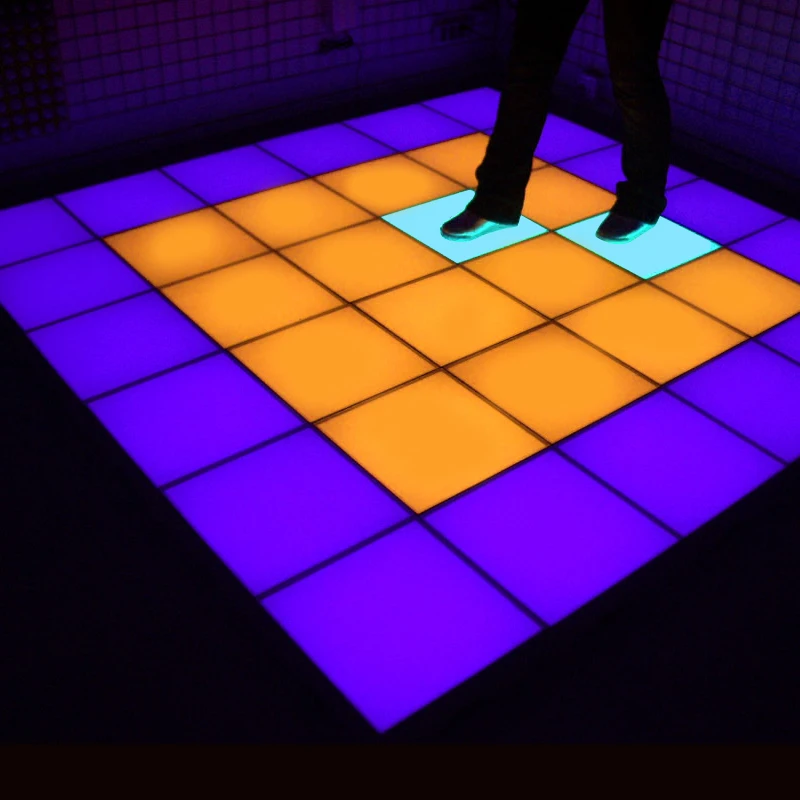How to make a pole dance routine
Ask Peach: How Do I Choreograph A Pole Routine?
FAQ: How Do I Choreograph A Pole Routine? Where Do I Start?
I have been asked by several people what method I use to choreograph my pole routines, so I thought it would be worthwhile to do an Ask Peach post. Of course, this is just MY process and what works for me in particular, so you may find certain techniques that help and some that you would rather swap for a different method, it is entirely up to you.
Here is how I choreograph a pole routine:
Step 1: Choose A Song and Theme
I always choose my song and theme first before beginning to choreograph. For me this stage is the most important because I base my costume, dancing and tricks on these two choices. Sometimes a theme develops organically from a song choice, or I sometimes come up with a great theme and then look for a song that fits my vision. Sometimes I have a song straight away, and sometimes I have to spend hours trawling through Spotify to find the right music to fit my costume idea – it all depends.
Step 2: Create A Mind Map Of Your Dance ‘Vocabulary’
Your dance ‘vocabulary’ as I like to call it includes: pole tricks, floor work moves, spins, transitions (round the pole, and mounting and dismounting the pole), and poses. I recommend drawing a mind map with ‘Choreography’ at the center, and each of these categories coming off, from which you can list what you wish to include in the routine.
My advice would be to not just write down all the moves you know (although that can be helpful to begin with), but to select moves based on your song choice. If you have picked a ‘slinky’ song, include moves that are flowing and sensual, rather than too dynamic or staccato. If you have selected an aggressive song don’t pick moves that are ‘pretty’ or delicate. It seems like obvious advice but it is so easy to just stick in the tricks that you love and not the tricks that really suit the character and music.
Step 3: Listen To Your Song & Begin To Build ‘Sentences’
What you want to do next is listen to your song over and over and over, whilst looking at your dance ‘vocabulary’ mind map. I then begin to build up ‘sentences’, looking at what moves I can link to what, how they fit with the music and so on.
I then begin to build up ‘sentences’, looking at what moves I can link to what, how they fit with the music and so on.
At this point I know some people like to break down the song into 8-counts (if you are interested I have included a very simple video from YouTube that demonstrates what counting an 8-count looks like). Whilst I do loosely refer to this, I don’t stick to this method stringently. As my moves tend to be closely tied to specific lyrical or rhythmical moments I just choreograph by writing the choreography as a list, sometimes with specific lyrics or annotations in parentheses just so I know which section of the song they are meant for.
Step 4: Take It Onto The Pole
I do the majority of my choreography using visualisation before I even step near a pole, so I will usually have entire sections of my routine worked out in my head before I try them out. Luckily more often than not they translate well, but sometimes they require a little tweaking, which simply means I go back and revise what I have done and see if I can make it better.
Luckily more often than not they translate well, but sometimes they require a little tweaking, which simply means I go back and revise what I have done and see if I can make it better.
The initial process I follow is paper based, going to the pole and back again, but after that it gets worked into my memory simply by listening to the song and drilling it through mental rehearsal / visualisation. I will listen to the song 5-10 times in a row whilst walking or driving for example, and run the routine in my head. You may find this method works for you, or you may want to choreograph exclusively in your head and do not need to take notes at all, just find what you are comfortable with.
My only exception in my method is when it comes to any low flow / base work I incorporate. For this I feel that being at the pole and experimenting works best, because there isn’t a set ‘language’ of moves so much as just listening to what your body has to say. Allowing your body to freely skate and slide around the pole, and sitting in certain poses and seeing where you can go next, for me, is the best way of working out low flow. That, and watching obscene amounts of videos on Instagram! lol
That, and watching obscene amounts of videos on Instagram! lol
Step 5: Innovate
So, you can do a Butterfly into an Inside Leg Hang into an Allegra, but everyone who takes a pole class will learn this combo, and various others. If you are choreographing for a competition it is important to be innovative as much as you can in your combos, moves and transitions. Give the judges and audience something fresh and new to watch.
Look at your mind map of dance ‘vocabulary’ – What moves can you tweak? What interesting combinations can you make that you haven’t learnt in your regular classes? How can you make that transition or floor work move different? Really think creatively and challenge yourself not only to come up with choreography, but choreography that is uniquely YOU!
If you are just starting out and are a beginner level this is not essential, but it is still a good habit to get into. If you are looking at going for semi-pro or above I would suggest doing this sooner rather than later, and make it a regular part of your choreographing so that you get into the habit of trying to think creatively.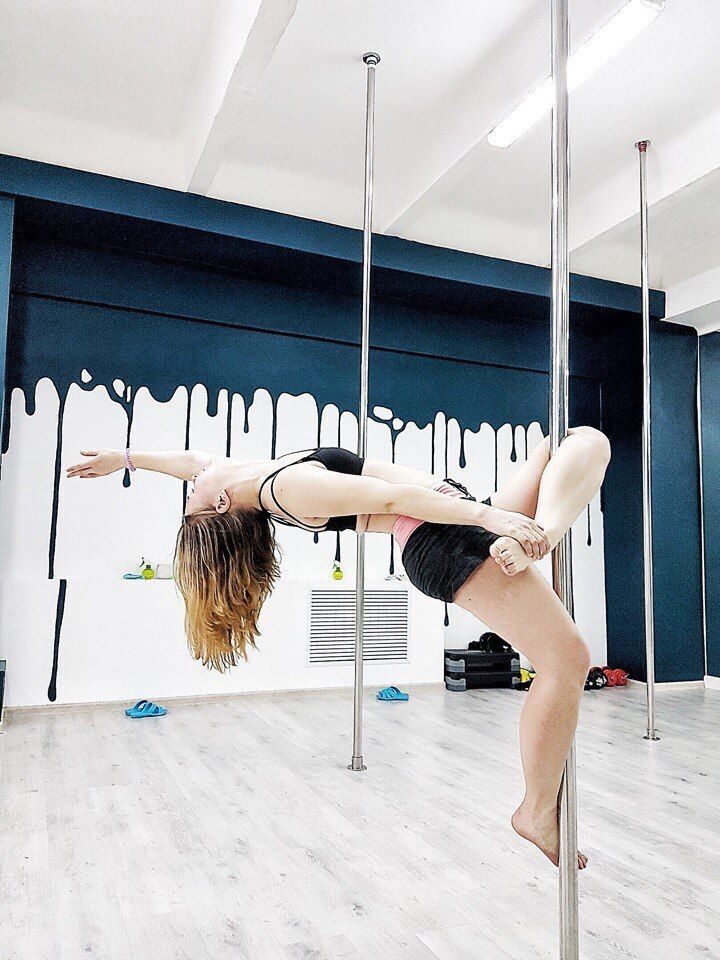
TOP TIP: Seek Out External Inspiration
To further help you ‘innovate’ you should be looking to expand your movement and dance ‘vocabulary’ as much as you can from resources outside of pole. Yes, I watch lots of pole videos to get ideas for moves and combos that I can change and make my own, but I do not limit myself to that. I look at other styles of dance, burlesque, fashion magazines, gymnastics, movies, and so much more. Look at as many sources as you can to find interesting and innovative styles of movement that you can use to make your routine unique. If you are a classique style dancer take a ballet or Latino class. If you mostly do lyrical style pole try a street dancing or Capoeira class. Challenge yourself and you will find awesome new ways to enhance your performances.
Step 6: Film & Refine
Once you have choreographed something for the full length of the song, run through the routine until you have it memorised enough to film it. Try to video your routine at least once every time you practice. Watch the video back and see where the routine flows well and where it does not, altering the choreography if you need to. Watch your facial expressions, your arms and hands, and the execution of your moves, and address any bits that do not look as polished or as effective as they could be. Rinse and repeat this step until you have your routine in perfect condition.
Try to video your routine at least once every time you practice. Watch the video back and see where the routine flows well and where it does not, altering the choreography if you need to. Watch your facial expressions, your arms and hands, and the execution of your moves, and address any bits that do not look as polished or as effective as they could be. Rinse and repeat this step until you have your routine in perfect condition.
♥♥♥
And that is that! Please note, the more times you have done this the easier and easier it gets. Your first couple of choreographed routines will be difficult – they will be tricky to get flowing, your moves may not link perfectly and you might find it hard to think up moves and combos.
The first routine I ever wrote down was basically just every single spin I had learned in quick succession, with a few transitions thrown in – it never went to stage. So, even if you have no competition or show coming up, choreograph anyway! It is great practice and will give you a head start for when you really do have a showcase or competition looming.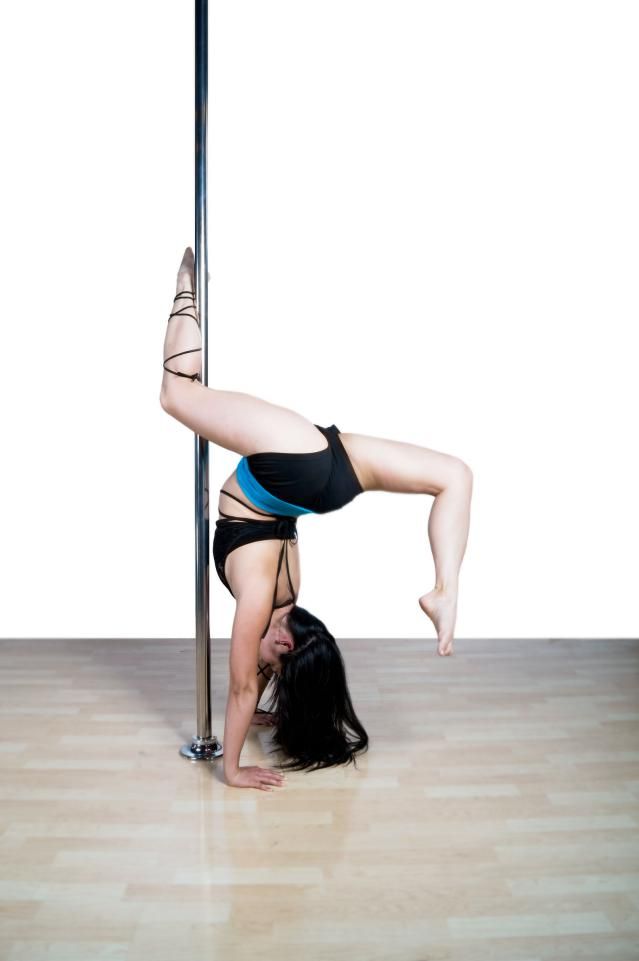
Rest assured that with practice it gets much easier. Your ‘vocabulary’ begins to grow and diversify, and you will find yourself being able to link moves and transitions more easily. With each routine you will grow to know your body better, understanding the types of movements it does naturally, and the best way to use it in your dancing.
Now, just get stuck in there and starting choreographing. Good luck! ♥
(How To) Choreograph a Pole Dance Routine
What is Your Style?
So, you’ve established what kind of energy you want to portray, but it’s also important to think about whether this aligns with your natural style.
Do you consider yourself more lyrical, entertaining, or dramatic? More strength and fitness focused, or exotic and sensual?
Don’t feel like you have to stick to just one, either.
Consider what moves you always default to when you’re trying to fill up space in a routine. What movements feel natural and fun to you?
When you’re looking to portray a type of energy that you feel doesn’t come as easily to you, it’s important not to make it look forced – which means it’s important to understand the differences, and find a way to seamlessly balance the two.
What story are you telling your audience? A good routine, especially in competitions, is going to tell the audience a story and draw them in. They’re there to watch and be entertained, after all!
Keep this in mind when you run through your song.
If it has words, what actions can you use to emphasize the words you want the audience to focus on?
If you are using props, what can you use to emphasize your story as a whole?
What moves can you use to make an impact on the audience, and when?
If you’re feeling stuck, you can always make a mind map or list of the tricks you know, starting with the basics and moving up.
In our article How to Build a Show, we showed you how to pace a show using the 2 – 3 – 1 concept, which we’ll recap here:
How you pace your show sets the scene and perpetuates the rest of the routine. It’s also important to keep yourself at this pacing so you don’t tire yourself out.
In the beginning, you should showcase your second best trick.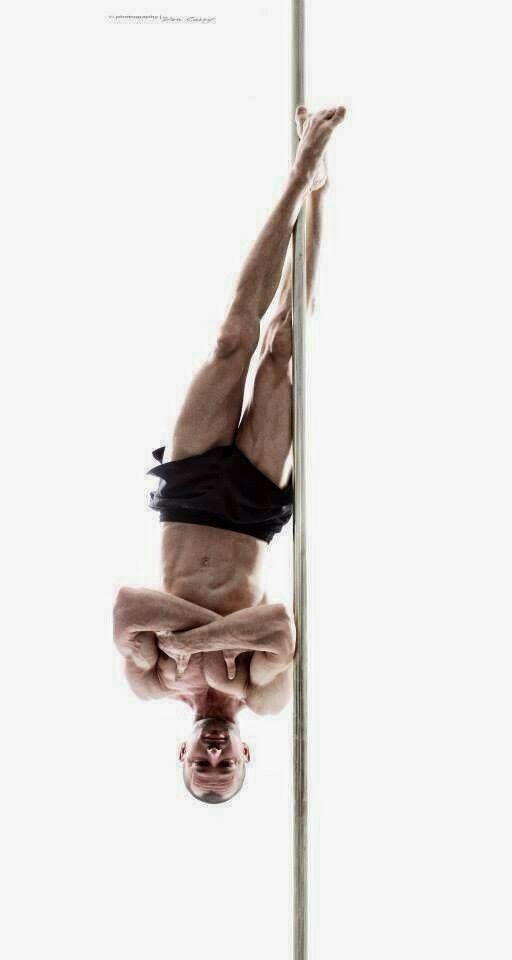
The middle should be your least impressive tricks – the filler content: the least energy-intensive, yet it is what makes up the substance of the show.
In the end, you should showcase your showstopper. It’s called that for a reason! The best trick you have in the bag, the most impressive – something that will leave the audience’s jaw on the floor.
So: what are your three highlighting moves – your 2nd best, your 3rd best, and your absolute best?
Now, all you have to do is work backwards. How do you need to get into that move? Where do you need to go from your previous Best Trick? From there, you can stitch together all the moves in-between.
Unless your routine is solely pole-focused, or solely-floorwork focused, you’ll also want to make sure that you give each element of your routine attention. Give the floor attention, give spin pole attention, and give static pole attention.
A way you can simulate this in the studio classroom, if you have the space, is by having everyone move to another pole, or move back and forth between poles.
Your Transitions are Where You Dance
We are pole dancers, aren’t we? Then why isn’t there more dance in the typical routine? Your transitions are where you facilitate that movement, the extra extension, the long, dramatic pause.
It’s important to keep your transitions smooth. Never rush through them; you might lose the effect in your whole choreography.
Yes, these moments blend into your routine, but it can make or break a routine. It’s an excellent skill to nurture, and can make all the difference in a competition.
Don’t Feel Like You Have to Showcase Everything
When you’re first beginning to work on choreography, you may be tempted to jam all the tricks and transitions and moves that you can in, but it’s going to upset your pacing and you’re going to tire yourself out.
Give your tricks space and work on taking more time in your transitions. This is your chance to throw in a little personal flare, showcase a facial expression, or engage the audience.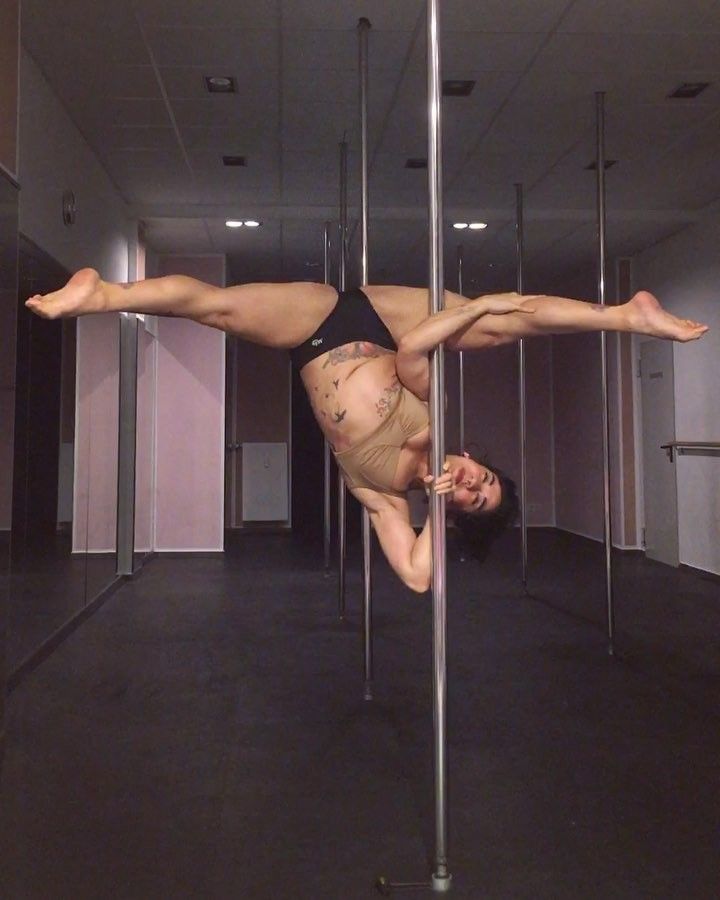
It’s totally normal to try and plan out every beat of your song, but if it doesn’t tire you out, then it’s going to hamper the performance part of your choreography. If you miss one move, you might start to rush, or you may just look like a robot!
Be Okay with Change
If something isn’t working in your routine, it doesn’t mean that you lost a move, or you can’t do it. It just means that move isn’t right for the routine.
It’s important to understand this and be okay with moving onto a different move or transition if something doesn’t work. Don’t force it, and you’ll find yourself happier in not only performing the routine, but also in how you feel about pole and about practice.
It’s Okay to Innovate
Don’t feel like you’re stuck in a box and that you have to perform moves to the letter of the law.
If you’re performing in a competition, yes, they might take points off for something being “incorrect” depending on the venue and the category, so keep in mind the rules and ask the judges if you’re unsure – but the biggest thing to remember is that you don’t need to be afraid to experiment and play around with new shapes and new moves. That’s how many of the moves we know today came about!
That’s how many of the moves we know today came about!
Pole Dance for Beginners
Pole dancing or Pole Dance, as they are also called, has recently gained extraordinary popularity. Many want to learn how to gracefully and easily perform difficult tricks, spin on a pole, and demonstrate the wonders of flexibility and plasticity.
This direction really has many advantages. Practicing regularly, a beginner dancer:
- develops muscles, improves figure;
- strengthens the respiratory and cardiovascular systems;
- improves immunity;
- learns to feel his body and control it;
- increases his self-esteem and feels even more attractive.
But of course it won't come all at once. You need to be ready for trials - both physical and moral. And to make it easier for you to deal with them, you began to enjoy training, check out a few tips. We hope you get something useful from them. By the way, in St. Petersburg, pole dancing is especially popular at Admiralteisky and Vyborgsky districts, including metro station Baltiyskaya and metro station Ozerki.
Petersburg, pole dancing is especially popular at Admiralteisky and Vyborgsky districts, including metro station Baltiyskaya and metro station Ozerki.
The right attitude is important
Many people give up after the first lesson on the pole. Faced with serious workloads, it can be hard to overpower yourself and continue. In addition, some compare themselves to other, more experienced athletes. And, of course, this comparison is often not in their favor. Remember: those who show the best result today conquer with their clever tricks, just like you, they started small . No one was born with such skills. All this was achieved through hard training. Treat such people as great motivation. If they can do it, then you can too!
Pole dancing has been given observer status with the GAISF (General Association of International Sports Federations), due to which they can expect to be included in the Olympic program.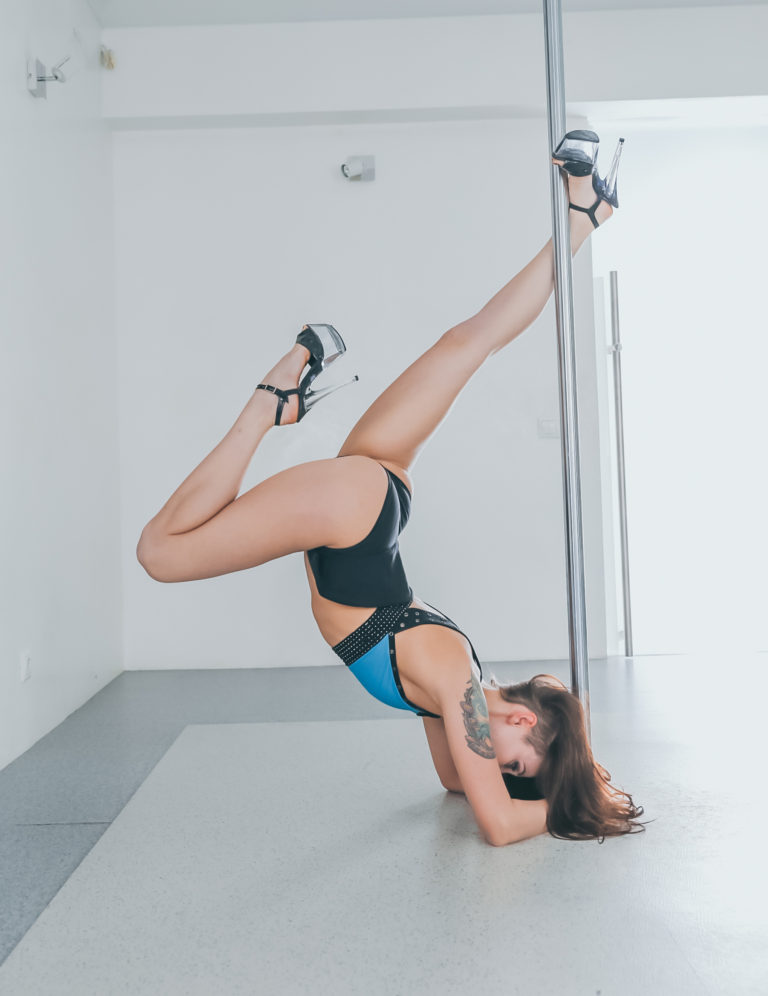 In many ways, Katie Coates, an Englishwoman who founded the International Pole Sports Federation, contributed to this.
In many ways, Katie Coates, an Englishwoman who founded the International Pole Sports Federation, contributed to this.
Get ready to work hard through physical pain at first. Bruises, abrasions, calluses, krepatura - all this should not come as a surprise to you. But, don't let such tests scare you. If you really want to succeed in this field, be patient . A nice "payment" for your efforts is just around the corner. The dancing beginner will soon begin to notice how the body rewards him for his hard work with growing strength, endurance and honing the curves of the physical form. When you begin to notice the first results, you will no longer be stopped, since you will not want to be limited by what you have already achieved.
Wear the right clothes
To get the most out of your pole training, it's important to wear the "right" clothes. For a warm-up, during which the muscles are prepared for further loads on the pole, you can wear leggings and a T-shirt.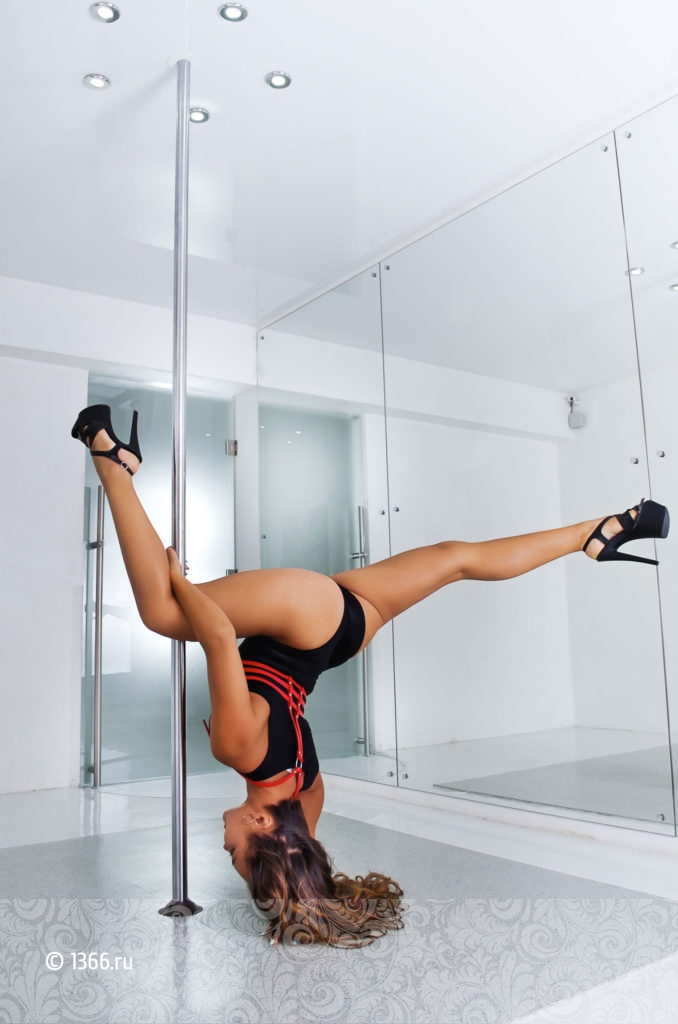 It is convenient to do strength and stretching exercises in them. For the pole, short, tight shorts, a tank top, or custom uniform are best. It must have the following properties:0005
It is convenient to do strength and stretching exercises in them. For the pole, short, tight shorts, a tank top, or custom uniform are best. It must have the following properties:0005
- hygiene;
- breathability;
- excellent grip on the surface of the pole;
- thigh compression;
- good breast support;
- moisture absorption;
- hypoallergenic.
For the top, you can choose a T-shirt made in the “wrestler” style, which has a deep armhole in the area of the shoulder blades and enlarged cutouts under the arms (needed to grip the pylon). Also suitable is a top that has an elastic band in front under the chest, and a double placket in the back, formed in the form of the letter "X". This style is also called "frog". Some people like the Carmen T-shirt with an asymmetrical strap thrown over one shoulder.
Gloves will not be superfluous either. They must be special, with an anti-slip coating. They usually have a lacquer base and lace, knitwear or microfiber inserts. So don't try to make them yourself. To reduce the risk of sprains and injuries, bandages are used - on the ankle, elbow, knee, wrist.
They usually have a lacquer base and lace, knitwear or microfiber inserts. So don't try to make them yourself. To reduce the risk of sprains and injuries, bandages are used - on the ankle, elbow, knee, wrist.
In the XII-XIII centuries in India, a very unusual direction of yoga on pillars called Mallakhamb was widespread. It shows an amazing similarity with modern pole dancing. This practice was intended primarily for men. Using poles, they performed complex tricks and thus trained their strength and endurance. Having achieved some success in this direction, they demonstrated their achievements to others.
As for shoes, you can train without them. It all depends on the individual preferences of the dancer. Some wear half-Czech shoes, while others, already relatively experienced, prefer strips - sandals on an extremely high platform and heels. By the way, they say that it is the strips that make it possible to achieve the maximum effect of the pole dance, seductiveness and elegance of movements.
Warm-up is essential
A good warm-up should never be neglected. Poorly warmed up muscles are easy to injure. Take 15 minutes for this important part of any workout. You can perform the following exercises on different parts of the body:
- Neck . Do tilts, turns, half-turns to the right and left, forward and backward 20 times, circular turns clockwise and counterclockwise 10 times.
- Chest muscles . Arch your back, round, spread your arms to the sides.
- Press . In addition to the standard twist on the press (you can do it with legs raised), do “scissors”, “bike”, swings for each leg for several approaches, as well as a plank on your hands.
- Buttocks and legs . Squats 30 times, lunges on each leg 20 times are the best option for warming up the muscles of the lower body.
Pay special attention to the muscles of the arms , as they are the main load during the pole dance. Do push-ups regularly, try to pull yourself up on the horizontal bar, pump your arms with dumbbells and a barbell. However, a competent coach will always tell you what exercises you need to do and make sure that you do not start performing tricks on a pole without prior preparation.
Do push-ups regularly, try to pull yourself up on the horizontal bar, pump your arms with dumbbells and a barbell. However, a competent coach will always tell you what exercises you need to do and make sure that you do not start performing tricks on a pole without prior preparation.
Exercises for beginners
Tricks used in pole dancing can be divided into two main groups: static tricks (stationary) and twists (rotary movements around the pole). In turn, the tricks consist of " hangs " and " sits ", during which the dancer hangs or seems to "sit" on the pylon, respectively.
How to prepare for the effective performance of the static components of the dance? For a beginner, training of the following elements is suitable:
- " Chair ". It is necessary to clasp the pylon with your legs, firmly squeeze the inside of the thighs and hold on to the pole with your hands.
 In this case, the legs should be perpendicular to the pylon. If you still can't keep them straight, you can bend at the knees.
In this case, the legs should be perpendicular to the pylon. If you still can't keep them straight, you can bend at the knees. - " Fireman ". Cross your bent legs around the pole, hold with your hands and gracefully arch your back.
For a beginner, the following rotation exercises are also suitable:
- " Footboard ". It is necessary to straighten one arm, take it on the pylon above the head, and the other - at the level of the hips. Push off the floor with your feet and spin around the pole.
- " Frog ". Straighten your left arm and grasp the pole above your head. Bend the right one and grab the pylon at chest level. The left leg is wrapped around the pole. Push off with your right foot and spin.
The trainer will tell you how to do the exercises correctly and what needs to be corrected. It is enough to practice 2-3 times a week (provided that you are not lazy) in order to see the first tangible results in a couple of months.
Does a beginner need to be physically fit?
Existing physical fitness is rather an advantage, but not a prerequisite for starting classes. Dance experience is not required at all. A lot of girls come to training with absolutely no base. All the necessary skills are acquired in the process, from lesson to lesson. The coach pays enough attention to gradual physical preparation, so no one will demand quick results from a beginner. And it's even better if you don't rush. The main thing is to do everything not for speed, but for quality.
You need to be prepared for the fact that few people succeed the first time. If something didn’t work out today, then a little more effort, and even difficult tricks will begin to succumb to you. After all, it is such a pleasure to reveal new, unknown boundaries of your body.
The use of article materials is allowed only if there is an active link to the source!!!
Pole dancing: what is pole dance? How to start pole dancing
Not what it seems
Information on the shore: pole dance is not a striptease, but a full-fledged dance and sports direction, a mix of choreography, acrobatics and gymnastics. The direction originated already at the end of the 11th century in India and at first it was marked “men only” (well, or as they said then), that is, for the development of strength and endurance. Then circus performers got down to business: they traveled the world, adopted the experience of different nations and came up with acrobatic performances on a pole. And it turned out to be a great show! Since 2003, various championships and competitions have been held in pylon sports. The rules are black and white: it is forbidden to be naked and show erotic elements. It is heard that the inclusion of the direction in the program of the Olympic Games is not far off. And we are glad.
The direction originated already at the end of the 11th century in India and at first it was marked “men only” (well, or as they said then), that is, for the development of strength and endurance. Then circus performers got down to business: they traveled the world, adopted the experience of different nations and came up with acrobatic performances on a pole. And it turned out to be a great show! Since 2003, various championships and competitions have been held in pylon sports. The rules are black and white: it is forbidden to be naked and show erotic elements. It is heard that the inclusion of the direction in the program of the Olympic Games is not far off. And we are glad.
Not only dances
Pole dance corrects the figure for one or two. In one lesson, each muscle group has time to turn on: from the arms and back to the press, legs and buttocks - a great alternative to monotonous exercises in the gym. Since you have to stay on the pole in different planes, with each movement you feel a rather big load. You really work, get tired and spend a lot of calories. And flexibility, plasticity and stretching are also developing.
You really work, get tired and spend a lot of calories. And flexibility, plasticity and stretching are also developing.
Another huge plus: you won't be able to "pump".
The work, although difficult, has to be done with the weight of your own body - hello to the aesthetic relief. As well as a possible reduction in the manifestations of cellulite due to the work of the muscles of the legs and the activation of blood circulation. That's it, nothing more to dumbbells.
Not only sports
Pole dancing has several varieties. And if the direction of pole sport is a story about power elements and tricks, then pole dance and exotic pole dance are, first of all, dances. In the last version, the focus is on choreography in characteristic high heels, on musicality and sexuality, while tricks on the pole are supposed to be at a minimum. From the point of view of psychology, many dancers note the positive effect of dance on self-confidence, femininity, sensuality, getting rid of negative thoughts. Additionally, you are charged with adrenaline: after all, tricks are performed at a height of a meter, and clinging to a pole and simultaneously holding on to it is not so easy.
Additionally, you are charged with adrenaline: after all, tricks are performed at a height of a meter, and clinging to a pole and simultaneously holding on to it is not so easy.
How to prepare?
The official answer is no. I mean, you don't have to prepare. Absolutely everyone can practice pole dancing, no matter how many cups and medals you have in gymnastics. It will take two to three months of regular training to start feeling confident in performing tricks and stop being afraid of heights. The first meeting with reality is harsh: bruises and calluses are inevitable, especially at first. While this argument can be applied to literally any fight-calorie endeavor, whether you're cycling or trying on boxing gloves. A professional was asked to continue the checklist.
Kristina Levandovskaya,head and teacher of the Moscow branch of the school of dance and acrobatics on the My Pole Space pylon:
“It is important to understand that the pylon is not exercise therapy. In the classroom, we immediately begin to work with the weight of our own body, and not with small dumbbells of 2-3 kilograms. Therefore, if you have serious problems with the musculoskeletal system, it is worth solving these problems before classes.
In the classroom, we immediately begin to work with the weight of our own body, and not with small dumbbells of 2-3 kilograms. Therefore, if you have serious problems with the musculoskeletal system, it is worth solving these problems before classes.
And such a fear that before practicing pole dancing you need to somehow pump up or stretch there, this is superfluous. Not waste your time.
A competent trainer will select the appropriate exercises that correspond to your particular training, and the development of the necessary strength will take place under the supervision of a professional. The entry-level elements do not require or imply any outstanding flexibility.
Please bring short shorts, sports top, tank top or t-shirt for class. To warm up or while waiting for a lesson, you can take leggings or pants. Sneakers are not needed - the lesson most often takes place barefoot or in socks.






